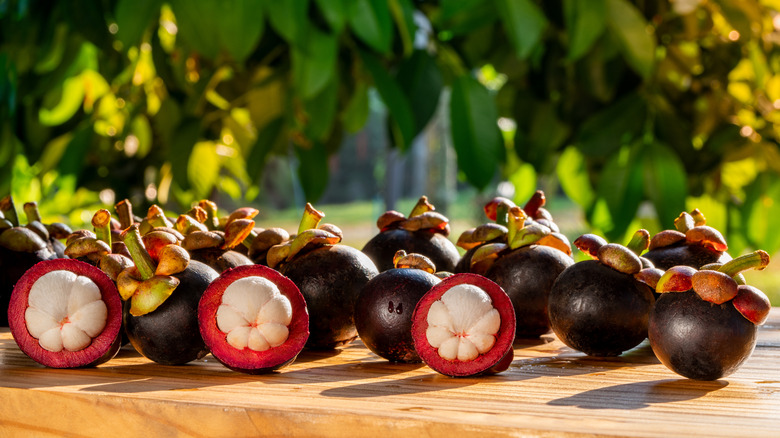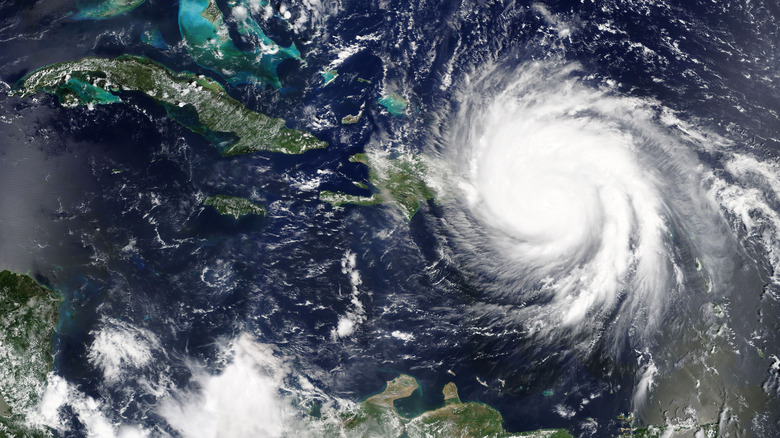A Hurricane Caused Serious Setbacks To US Mangosteen Farming
Despite its name, mangosteen isn't related to mangos (via Foodiosity), nor is it related to the South African white grapes aka steens. Instead, per Britannica, mangosteen is the sweet and sour fruit of a tropical, Southeast Asian plant. Hanging amongst its shiny, green leaves and big, pink flowers, one can find purple rinds hiding flesh that's white, juicy, and tart.
So why isn't it common in the U.S.? The trees grow slowly and can take over a dozen years to fruit, which is why mangosteen is so expensive. Plus, they're alternate-bearing, so only every other season is productive. Besides, Florida is the only state where they're grown — and even then, only in its southern regions. The crop prefers places such as Thailand, Panama, Jamaica, Indonesia, and Ecuador. Fruit flies are a common pest for mangosteen, and the U.S. wanted to avoid bringing this specific type into its borders, so imports weren't allowed before 2007. Foreign mangosteens can be now brought stateside, but only if they're irradiated with ultraviolet light to kill pests (via Britannica).
One other workaround for U.S. mangosteen also emerged during the mid-aughts, though. Puerto Rico, a tropical U.S. territory south of Florida, began cultivating them a handful of years into the new millennium, per Martha Stewart. Unlike the Sunshine State, the island of Puerto Rico could grow quality mangosteen in quantity, due to its lower latitude. Yet, after only a decade of growth, disaster struck.
Hurricane Maria devastated the mangosteen crop
Hurricane Maria hit Puerto Rico in September 2017, taking many lives, causing massive amounts of damage, and farms weren't spared from this destruction. Panoramic Fruit Company, which had been growing literal tons of mangosteen for U.S. consumption just the year before (per Martha Stewart), was one such grower affected. Winds over 140 mph blew across their land as rain pelted it and they lost roughly 50% of their fruit trees, with mangosteen plants among the hardest hit. Blocked roads made it difficult to reach the farm, so blown-over trees were unable to be salvaged, making matters worse.
Two months after the storm came, their owner was finally able to assess the state of his trees. Less than a thousand mangosteen plants remained in healthy condition, but that was enough to continue, albeit not in the full force of just a year prior. According to Martha Stewart, as recently as summer '21, Panoramic Fruit Company was able to sell mangosteens in Puerto Rico, but they could not export their fruit to the continental U.S. due to COVID-19 — yet another unforeseen issue that is now plagued mangosteen imports.
Mangosteens can sometimes be found in Asian produce stores on the mainland, especially during the summer. If you're lucky enough to find one, just crack it open or cut off the rind, and you're ready to dig in. We hope the farm recovers soon so we can start seeing more of this sweet fruit in the continental U.S. again.

